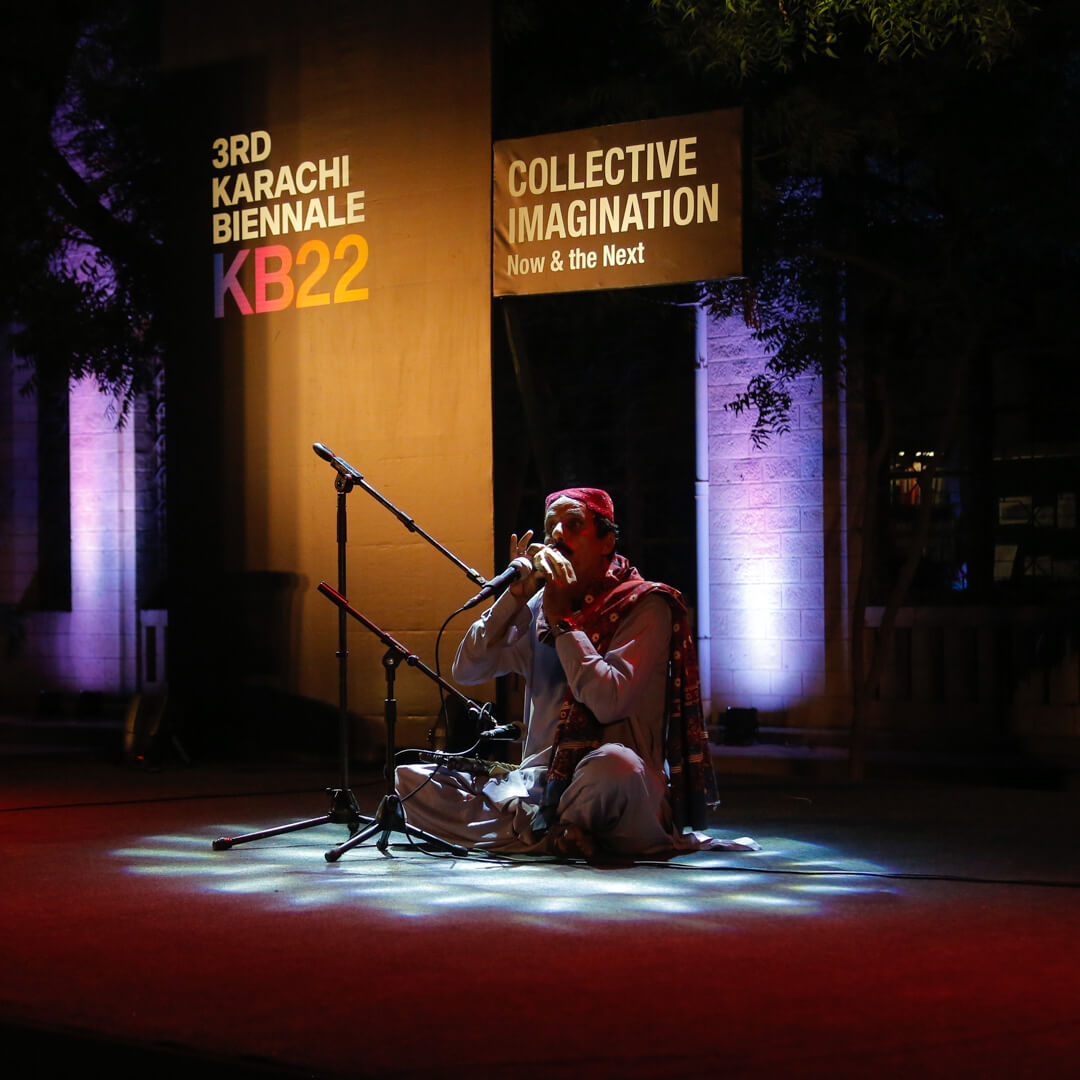To think of the Karachi Biennale as simply being a vehicle which showcases art is to fundamentally misunderstand and undervalue the potency the bienn
To think of the Karachi Biennale as simply being a vehicle which showcases art is to fundamentally misunderstand and undervalue the potency the biennale possess. It doesn’t just put artwork on display – it puts the city on display. What has continued to draw me back to each iteration of the Karachi Biennale, perhaps even more so than the plethora of great artists involved, is the anticipation and eagerness to know which previously hidden facet of my city will be revealed to me over the course of the biennale’s fortnight. Both previous iterations of the Karachi Biennale uncovered and presented several architectural, historical and cultural gems which, over the years, have been swallowed by Karachi’s labyrinth.

Karachi Biennale 2022 (KB22) holds true to this adage. At the inaugural ceremony of the Third Karachi Biennale on 29th October, one got the sense that the curator of KB22, Faisal Anwar, understood that the pull of the biennale lies not only in the artworks on display across the various locations but also in the venues chosen as spaces to house and display the art. While speaking at the ceremony in the inner courtyard of the NJV School, Anwar stressed that “the dialogue and the work needs to be seen, and the critical conversations that we are trying to have will hopefully bring people together over this shared interest.” The theme of KB22 certainly encourages the engagement between the viewer, the artwork and the artist which Anwar is so eager to foster. Titled Collective Imagination: Now and the Next, the central connective tissue which runs through all the works on display at the biennale explores the intersections of art and technology. Ironically, the constant failure of the microphone during his speech prompted Anwar to quip, “You see that’s the thing about technology. Whenever you need it the most, it always fails.”
The premise underpinning this year’s biennale also hopes to grapple with a recurrent question in today’s day and age, especially in a country like Pakistan: what is the role of art in contemporary times? With its eyes firmly fixed on the horizon, KB22 not only hopes to answer this question but also wants to chart a path for the future of art in the country, one which lies beyond the confines of art galleries. Echoing this sentiment, Anwar said, “How can we break these different silos, these corridors of museums, galleries, and bring these different, amazing people together to show us where the future lies?”

One of the amazing individuals given the spotlight at the inaugural ceremony of KB22 was the Sindhi folk singer Faqir Zulfiqar. One of the few practitioners of the 5000 year-old instrument the borindo, Zulfiqar entranced the audience through his renditions of Raag Behravi produced by the clay instrument. For those curious to know more about this simplistic yet intriguing piece of Sindh’s music history, I would greatly recommend visiting the work “Microtonal” on display at the NED University (City Campus). It showcases the borindos, Zulfiqar’s music, and the skill of 90 year-old potter Allahjurrio in order to explore the inextricable link between culture and music. The brainchild of the UK-based arts studio known as Invisible Flock, the display deserves a mention here because it was awarded the Jury Prize at the inaugural ceremony.

Hearkening back to the significance of such endeavours in helping citizens connect with their city, Managing Trustee of the Karachi Biennale Trust (KBT), Niilofur Farrukh stated that the legacy of buildings like the NJV School must be recognised and cherished, “We are truly in a historic space. And as we celebrate 75 years of Pakistan, it really brings home the fact that it is only with optimism and hope that we can build the country. From the inception of the biennale we wished to connect the history of this city with its people.” In an ode to the historic space and in an attempt to draw upon what it has to offer, Amin Gulgee crowned the inauguration of KB22 through a performance art piece which had the students of the NJV School participating in the performance alongside the enigmatic artist. Seeing children engaging with and partaking in the artwork served as a testament to Farrukh’s words during her inaugural speech, “The works here inspire young people, and in many ways this biennale is dedicated to the youth.”

COMMENTS